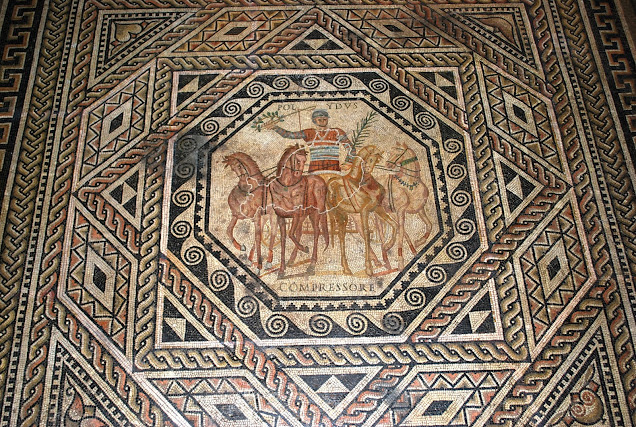Marcus Marcellus' theater
This great sculpture of (most likely) Marcellus was on display at 'Imperium' at Haltern am See, as part of the exhibitions of 2000 years 'Varusschlag'. It is found at the second floor of a house in Pompei, in 'Casa del Citarista'. Originally, it must have been painted, while the eyes still bear its traces. During the years it was speculated that the sculpture was an image of Brutus Minor, Agrippa Postumus, Drusus, Germanicus or a representative of the Pompeian gens Popidii. Due to its resemblance of a portrait of Marcellus at the Musei Capitolini, scientist finally agreed on Marcellus; also while Marcellus was the patronus of Pompei.
The Theater of Marcellus, was named after Marcus Marcellus, Augustus's nephew and who died five years before its completion. Space for the theatre was cleared by Julius Caesar, who was murdered before it could be begun; the theater was so far advanced by 17 BC that part of the celebration of the 'ludi saeculares' took place within the theater. It was completed in 13 BC and formally inaugurated in 12 BC by Augustus. The theater was 111 meter in diameter and could originally hold 11,000 spectators. It was mainly of tuff, and concrete faced with stones in the pattern known as opus reticulatum, completely sheathed in white travertine. The network of arches, corridors, tunnels and ramps that gave access to the interiors of such Roman theaters were normally ornamented with a screen of engaged columns in Greek orders: Doric at the base, Ionic in the middle. It is believed that Corinthian columns were used for the upper level but this is uncertain as the theater was reconstructed in the Middle Ages, removing the top tier of seating and the columns. Like other Roman theaters in suitable locations, it had openings through which the natural setting could be seen, in this case the Tiber Island to the southwest. More pictures of the theater can be seen here!






Reacties
Een reactie posten